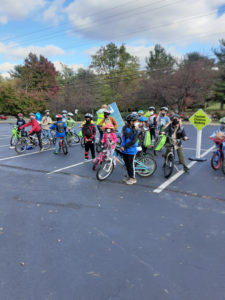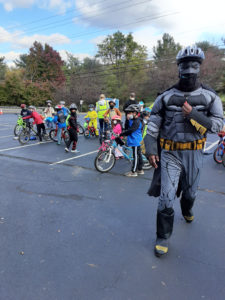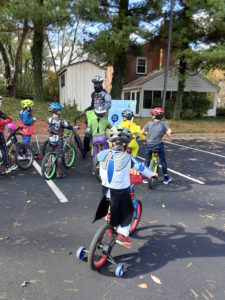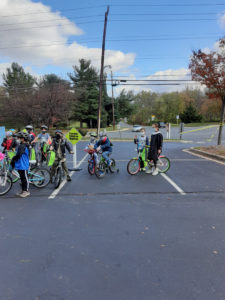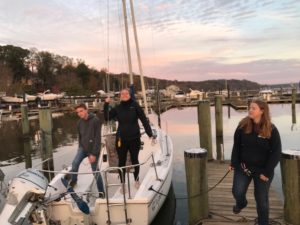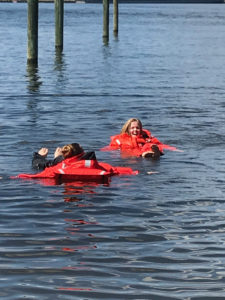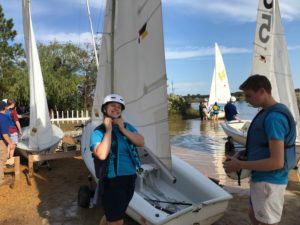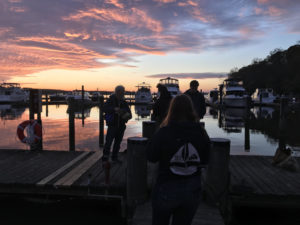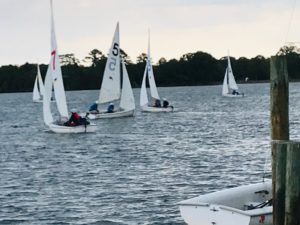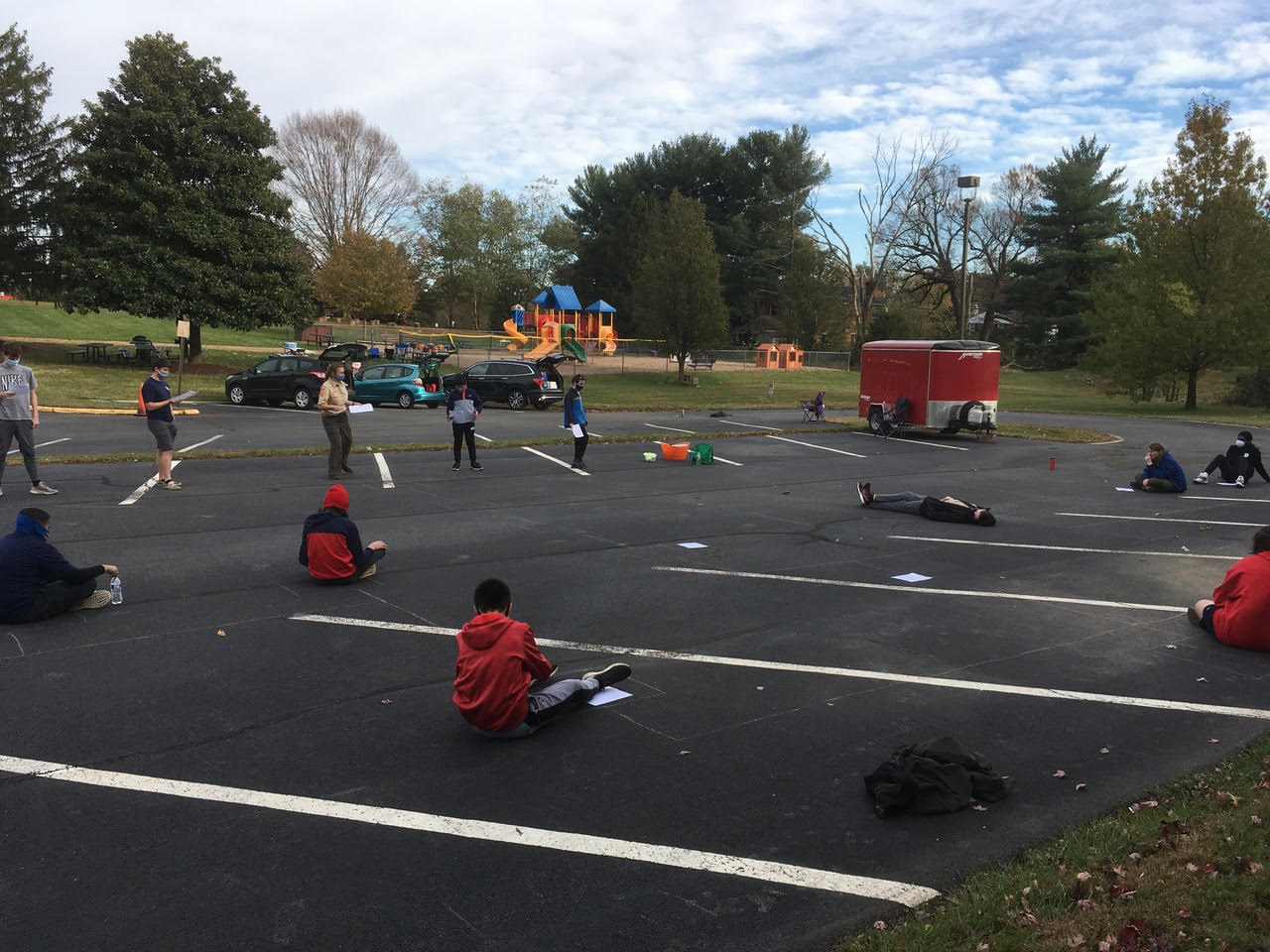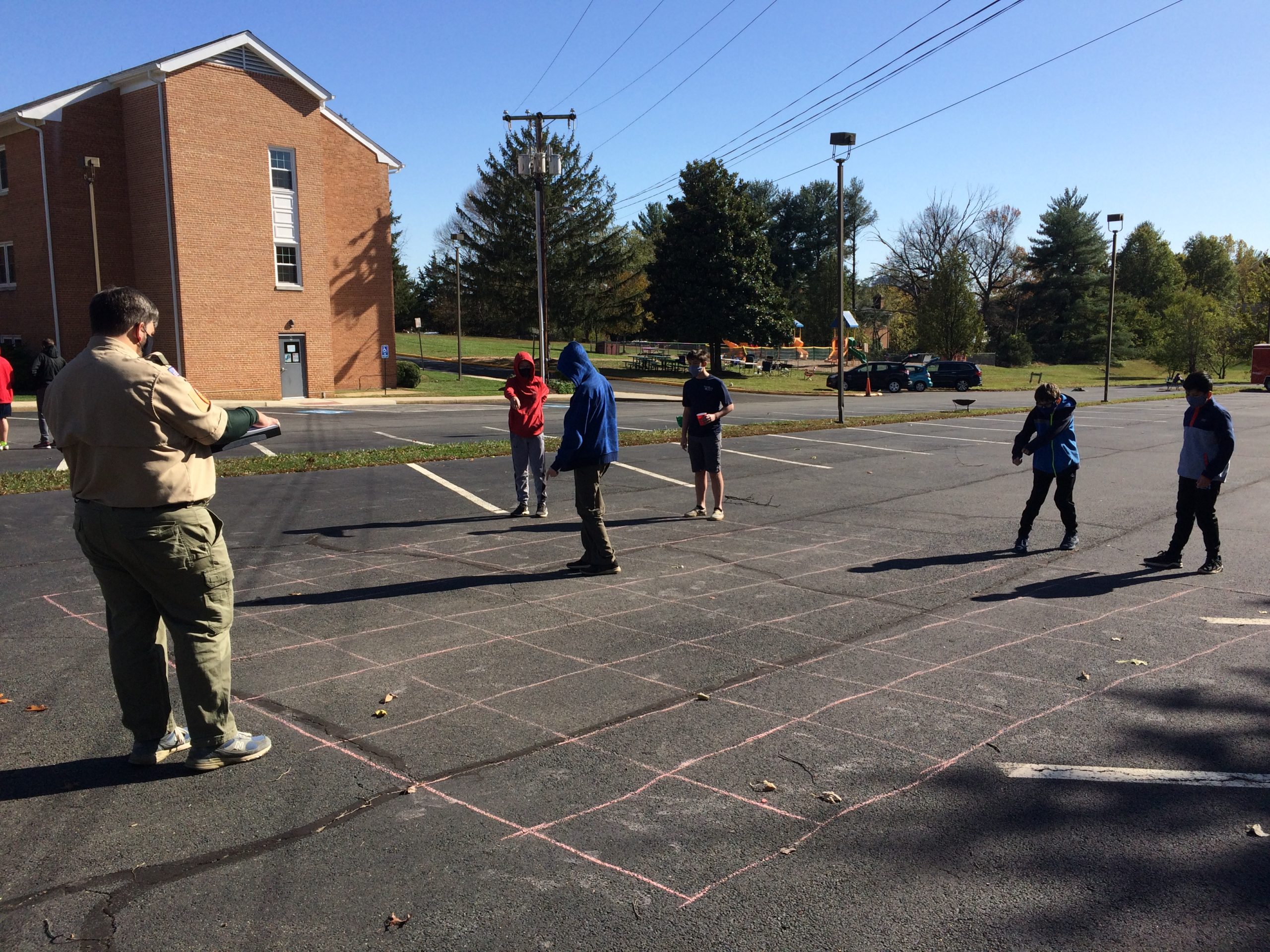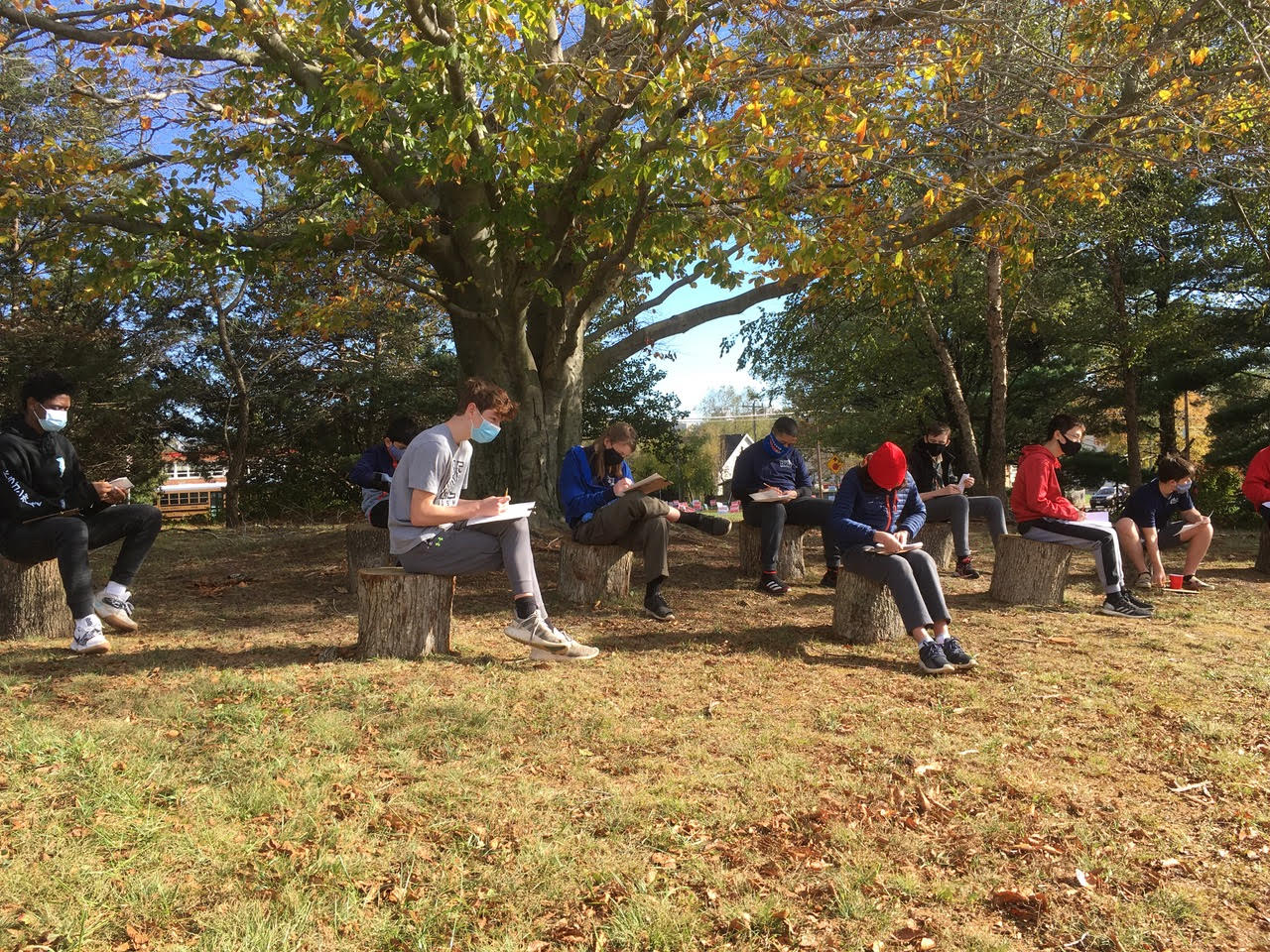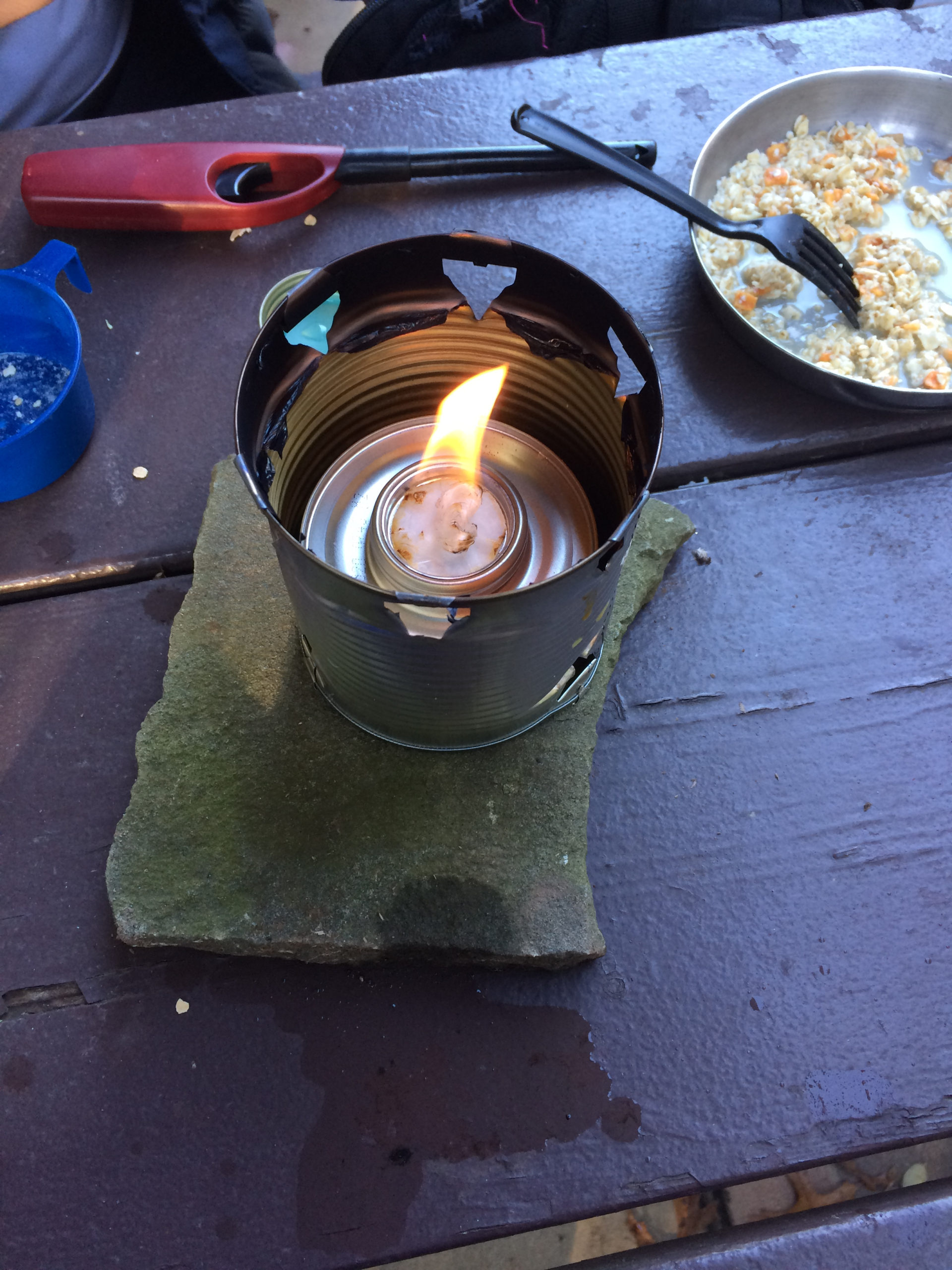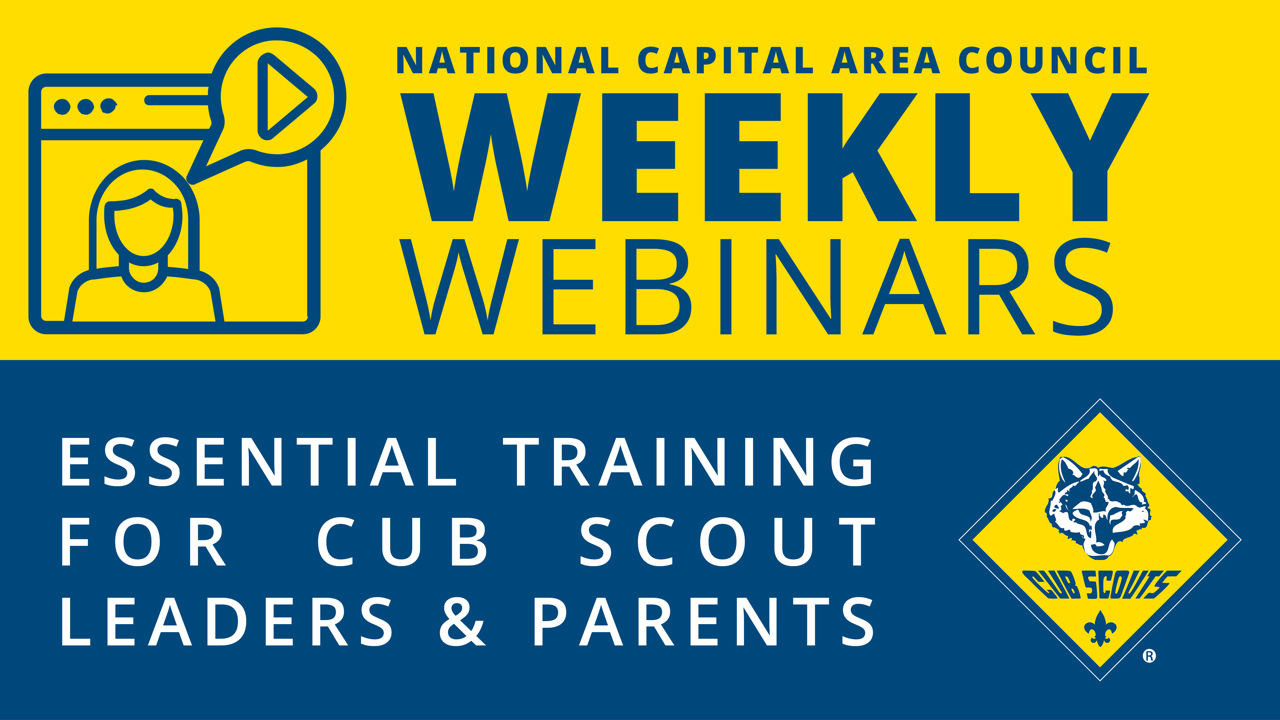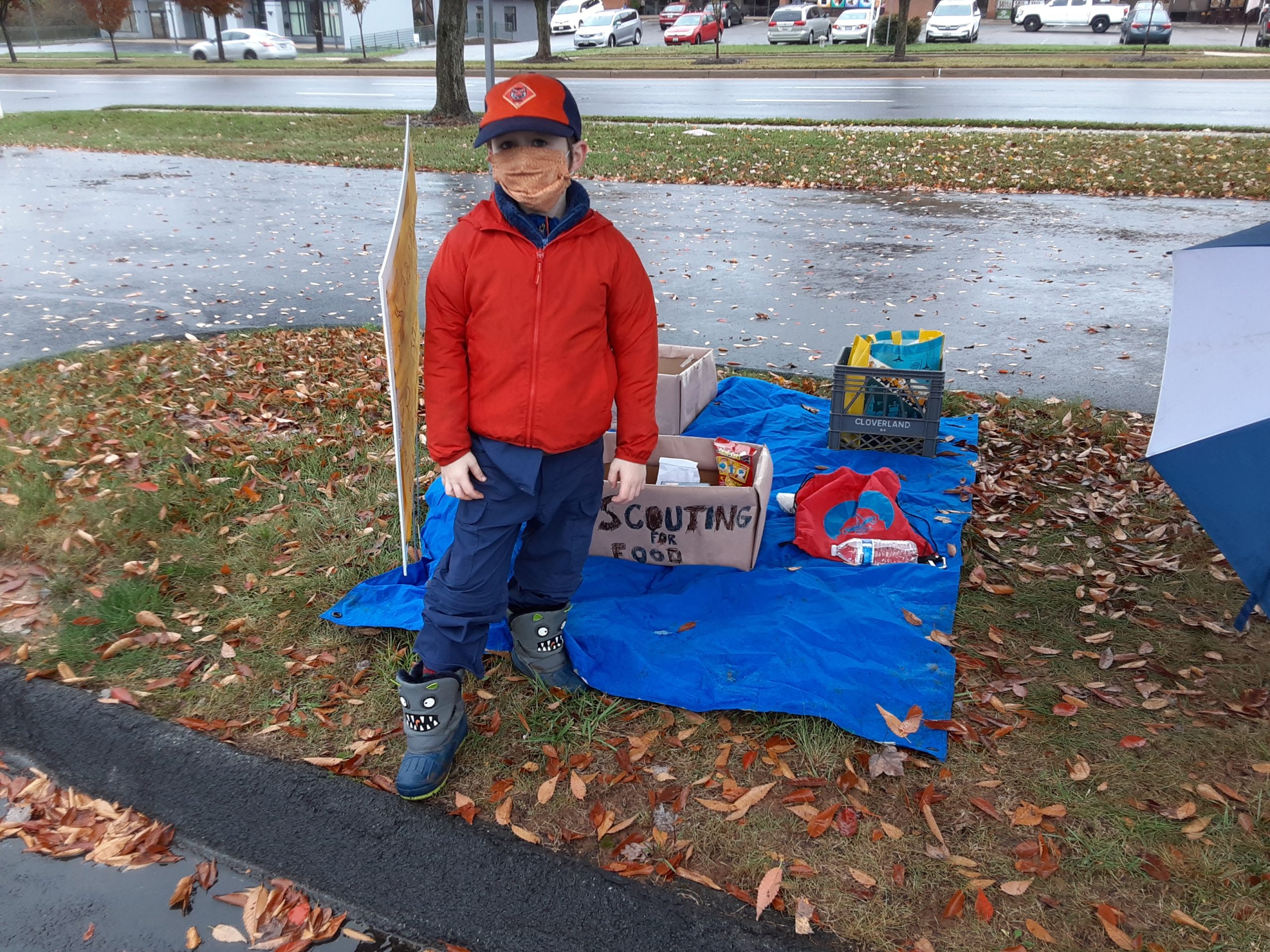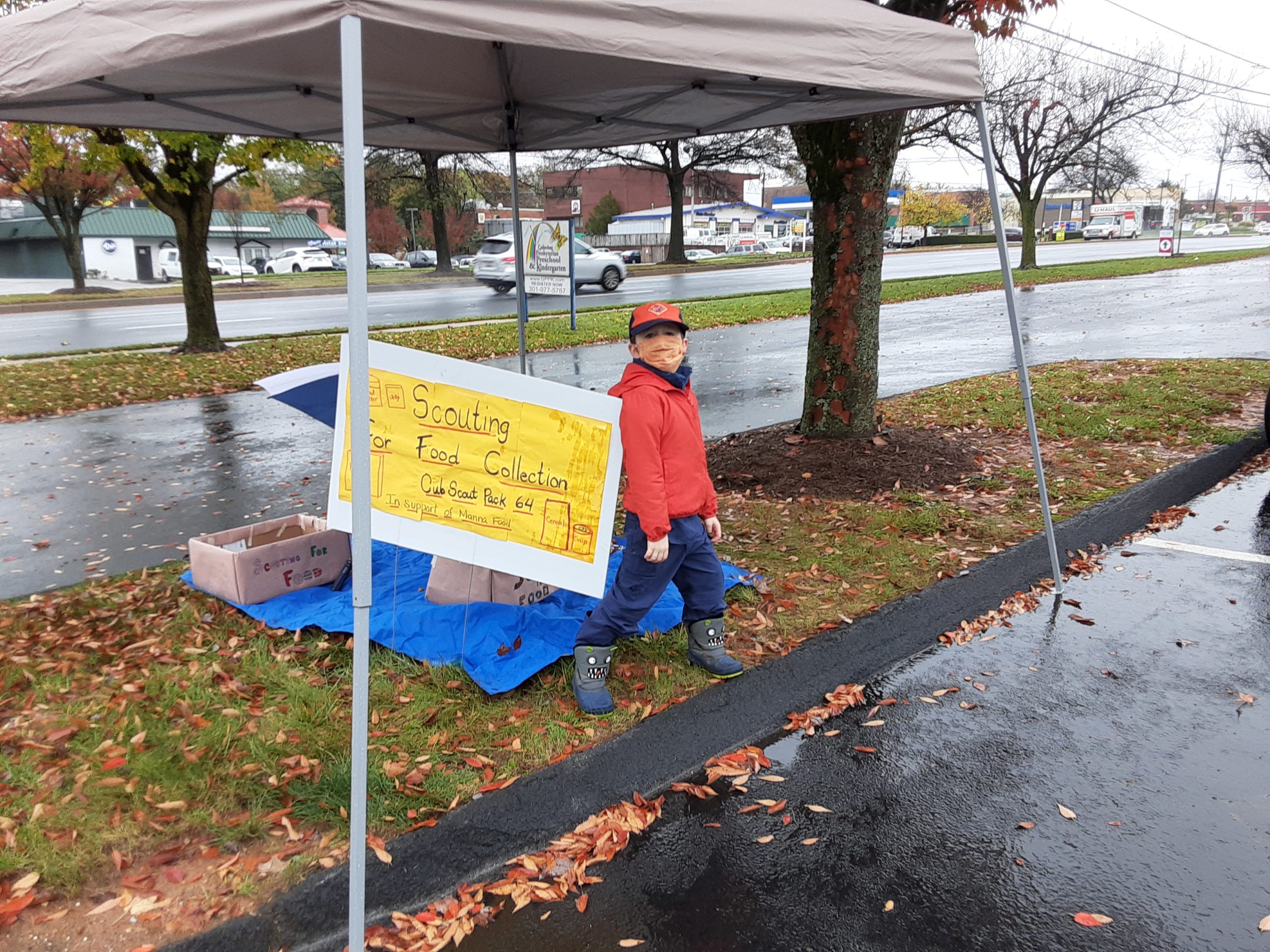As the third Aquia Troop founded after Scouts BSA opened the Scouting Trail to young women, Troop 907 Girls (Troop 907G), has been active and growing despite the on-going challenges of COVID-19. Troop 907G was founded on 19 Aug 2020 with 5 Scouts and 7 adults and is chartered to Ebenezer United Methodist Church in Stafford, VA. After 2 successful recruiting campouts and AOL crossovers, the Troop currently has 11 Scouts and 10 adult Scouters. The Scouts are Peyton, Ella, Kera, Bella, Josey, Maddy, Keira, Becca, Mariana, Emma, and Mackenzie. The adults are Ken Todd, Sharon Patrick, Helen Brennan, Chris Reynolds, Kristina Reynolds, Melonie Walker, Michael Walker, John Patrick, Kari Hammond, Jonathan Reynolds, and Jason Smith. As the Founder of Baden-Powell remarked over 100 years ago about the power of getting Scouts into the outdoors: “The key that unlocks the Spirit of the Movement is the romance of Woodcraft and Nature Lore.” Well, the hearty Scouts of Troop 907G have found that key and (safely) unlocked the Spirit of Scouting in the outdoors ever since COVID-19 reared its head. You can’t keep these Scouts down!!
In April, Scoutmaster (SM) John Patrick set up a 1-mile orienteering course at Pratt Park near Fredericksburg, VA for the Scouts to work on their land navigation skills with map and compass. Scouts left the starting point at 1.5-hour intervals, so there would be no overlap with any other Scout. For health and safety reasons, each Scout was accompanied by one of their parents – avoiding close contact with other Scouts and adhering to the Buddy System. Kera, Bella, and Becca completed the course.
From the March COVID-19 lockdown through May, the Troop had been doing Zoom meetings and virtual campouts along with classes to work on some virtual Merit Badges’ requirements, but the Scouts were getting really bored with the virtual world (something we can all identify with, right?) So, under the guidance of their Scoutmaster, the Scouts began preparations in April and May for getting back into the outdoors.
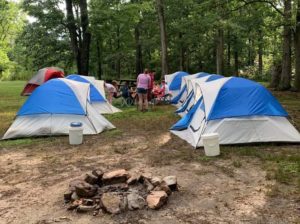 In June, Troop 907G Scouts safely conducted a backyard campout at the home of the Scoutmaster as preparation for a planned long-term camping trip in July. Six Scouts Kera, Keira, Maddy, Josey, Bella, Becca attended and worked on Scout Rank advancements for the new Arrow of Light Scouts who had crossed over in April. The older Scouts, under the supervision of the Scoutmaster (SM) and Assistant SMs, worked on their Totin’ Chip requirements and even practiced using a bow saw and ax, but only in the “ax yard” the Scouts roped off to ensure a clearly visible safe zone for handling woods tools. The Totin’ Chip certification grants a Scout the right to carry and use woods tools by showing their Scout leader that the Scout understands and can safely demonstrate knowledge, skills, abilities and responsibilities for properly using and taking care of woods tools and living the BSA Outdoor Code (see: https://www.Scouting.org/awards/awards-central/totin-chip/)
In June, Troop 907G Scouts safely conducted a backyard campout at the home of the Scoutmaster as preparation for a planned long-term camping trip in July. Six Scouts Kera, Keira, Maddy, Josey, Bella, Becca attended and worked on Scout Rank advancements for the new Arrow of Light Scouts who had crossed over in April. The older Scouts, under the supervision of the Scoutmaster (SM) and Assistant SMs, worked on their Totin’ Chip requirements and even practiced using a bow saw and ax, but only in the “ax yard” the Scouts roped off to ensure a clearly visible safe zone for handling woods tools. The Totin’ Chip certification grants a Scout the right to carry and use woods tools by showing their Scout leader that the Scout understands and can safely demonstrate knowledge, skills, abilities and responsibilities for properly using and taking care of woods tools and living the BSA Outdoor Code (see: https://www.Scouting.org/awards/awards-central/totin-chip/)
Troop 907G also had one new Scout join the day of the campout and Maddy camped with the Troop that Saturday night. The Scouts prepared all meals keeping COVID safe practices in mind and under the watchful eyes of adult Scouters. The day culminated with a Court of Honor where Scouts were presented with rank badge and other symbols of Scouting achievement. There were 3 Scouts who achieved the rank of Scout – Keira, Maddy and Josey, 1 Second Class Scout – Bella, and 2 First Class Scouts – Kera and Becca. Rank badges, as well as 5 Merit Badges were presented – Becca earned Environmental Science and Citizenship in the Community and Kera earned Environmental Science, Citizenship in the Nation, and Dog Care. 3 Totin’ Chip Awards and 3 Cyber Chip Awards – Keira, Maddy and Josey were also presented with proper ceremony and congratulations! After a hearty breakfast on Sunday morning, the Scouts packed up and headed home ready as they could be to “Be Prepared” for their long-term camping trip coming up in July.
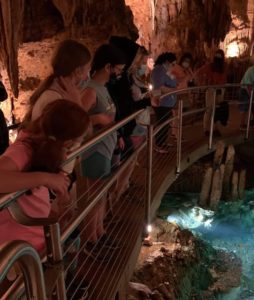 From 9 to 14 July Scouts Kera, Becca, Bella, Maddy, Josey, and Mariana were accompanied by 4 Scouters, John Patrick, Kari Hammond, Kristina Reynolds and Sharon Patrick, and 2 moms, Melynda Moran and Yaquelin Sanchez, as Troop 907G thrived in the outdoors during a long-term camping trip consisting of 6 days and 5 nights just outside of Luray, VA in the county park at Lake Arrowhead. The Scouts went horse-back riding, swimming, toured the Luray Caverns, tackled the obstacles and challenges of a Ropes Course, then ran through a hedge maze and returned to camp and went swimming again. On Sunday, the Troop relocated to another campground at the Shenandoah River Outfitters where the Scouts practiced setting up their tents in the pouring rain. It was a learning experience for everyone, but you can bet you’ve never seen Scouts set up their tents faster than they did in the rain! As Baden-Powell liked to say: “The rain reveals the true Scout.”
From 9 to 14 July Scouts Kera, Becca, Bella, Maddy, Josey, and Mariana were accompanied by 4 Scouters, John Patrick, Kari Hammond, Kristina Reynolds and Sharon Patrick, and 2 moms, Melynda Moran and Yaquelin Sanchez, as Troop 907G thrived in the outdoors during a long-term camping trip consisting of 6 days and 5 nights just outside of Luray, VA in the county park at Lake Arrowhead. The Scouts went horse-back riding, swimming, toured the Luray Caverns, tackled the obstacles and challenges of a Ropes Course, then ran through a hedge maze and returned to camp and went swimming again. On Sunday, the Troop relocated to another campground at the Shenandoah River Outfitters where the Scouts practiced setting up their tents in the pouring rain. It was a learning experience for everyone, but you can bet you’ve never seen Scouts set up their tents faster than they did in the rain! As Baden-Powell liked to say: “The rain reveals the true Scout.”
Sunday evening, all campers were treated to a nighttime lightening show for about 45 minutes – which everyone enjoyed from the safety of nearby cars. On Monday, the Scouts went on a 4-hour tubing ride floating down the Shenandoah River – a great time was had by all! During the evening hours, the Scouts sat around a campfire, telling stories, talking with each other and bonding in a way only fellow adventurers can in camp. On Tuesday morning, the Troop broke camp in true Scout Spirit, leaving nothing behind but their thanks for a good time, and then headed home tired, but with a lots of great Scouting memories.
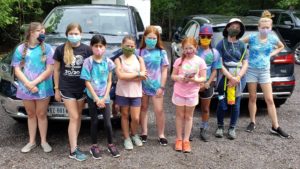 Troop 907G spent the weekend of 21-23 August at Westmoreland State Park where the Scouts worked on some of their nature requirements for rank advancement and also worked on the Geo-Caching merit badge. 6 Troop 907G Scouts, Kera, Keira, Maddy, Josey, Bella and Ella, participated, as well as 3 girls who joined the Troop to see what Scouting was all about. The Troop 907G Scouts introduced the visiting girls to camping and cooking outdoors and camping in the rain. The campers’ big surprise came when the bathhouse backed up and they had to go to other campgrounds in the park to use the facilities.
Troop 907G spent the weekend of 21-23 August at Westmoreland State Park where the Scouts worked on some of their nature requirements for rank advancement and also worked on the Geo-Caching merit badge. 6 Troop 907G Scouts, Kera, Keira, Maddy, Josey, Bella and Ella, participated, as well as 3 girls who joined the Troop to see what Scouting was all about. The Troop 907G Scouts introduced the visiting girls to camping and cooking outdoors and camping in the rain. The campers’ big surprise came when the bathhouse backed up and they had to go to other campgrounds in the park to use the facilities.
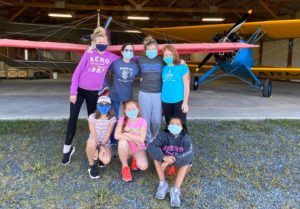 September 18th to 20th saw 6 Troop 907G Scouts Kera, Maddy, Josey, Bella, Mariana and Emma of Troop 907G camping at the Flying Circus Air Field in Bealeton, VA and watching the Air Show on Sunday. The older Scouts were given the responsibility of working with the younger Scouts, including one who had just joined the Monday before the camping trip, on their basic Scout skills and rank advancements. Baden-Powell would have been proud, as he often said that “Scouting is a game for [youth], under the leadership of [youth], in which the elder [Scouts] can give their younger [Scouts] a healthy environment and encourage them to healthy activities such as will help them to develop citizenship.” Saturday afternoon, one of the pilots gave the Scouts a tour of his hanger which had 5 different types of planes in it and explained about how they do the Air Shows and what all is involved in the planning.
September 18th to 20th saw 6 Troop 907G Scouts Kera, Maddy, Josey, Bella, Mariana and Emma of Troop 907G camping at the Flying Circus Air Field in Bealeton, VA and watching the Air Show on Sunday. The older Scouts were given the responsibility of working with the younger Scouts, including one who had just joined the Monday before the camping trip, on their basic Scout skills and rank advancements. Baden-Powell would have been proud, as he often said that “Scouting is a game for [youth], under the leadership of [youth], in which the elder [Scouts] can give their younger [Scouts] a healthy environment and encourage them to healthy activities such as will help them to develop citizenship.” Saturday afternoon, one of the pilots gave the Scouts a tour of his hanger which had 5 different types of planes in it and explained about how they do the Air Shows and what all is involved in the planning.
During the weekend of 23-25 October, Troop 907G camped at Christopher Run Campground on part of Lake Anna outside of Mineral, VA and worked on the Fishing Merit Badge. The Troop was conducting another recruiting campout and had another new Scout join the Troop. The Scouts participating in the campout were Kera, Ella, Becca, Emma, Mariana, Maddy, Josey and Mackenzie. Josey completed all of the requirements for the Fishing Merit Badge, while Mackenzie caught 2 small fish that she threw back. None of the other Scouts were lucky in catching any fish but that’s the way fishing goes sometimes. All of the Scouts enjoyed fishing so it’s a pretty sure bet they will do this again next year.
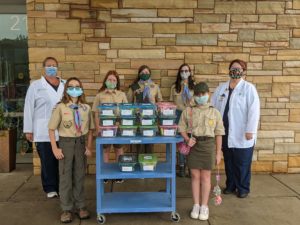 During all of camping trips and weekly meetings the Scouts took time to participate in The Jared Box Project. In total 8 Scouts – Keira, Maddy, Josey, Bella, Becca, Emma, Mariana and Ella – stuffed 14 boxes for children from pre-K to pre-teen/early teen, who are in the Emergency Room (ER) at Stafford Hospital, with items ranging from playing cards to coloring books and colored pencils, and other things. The boxes are given to the young children to help ease their anxiety from being in an Emergency Room. The Scouts decorated the boxes with stickers and included a get-well card in each box. On October 20th, 5 Scouts participated in presenting the boxes to members of the Stafford Hospital ER. Those Troop 907G Scouts who exemplified and lived the Scout Promise to “Help Other People at All Times” and the Scout Law to be “Helpful, Friendly, Kind & Reverent” were Kera, Josey, Maddy, Emma and Becca.
During all of camping trips and weekly meetings the Scouts took time to participate in The Jared Box Project. In total 8 Scouts – Keira, Maddy, Josey, Bella, Becca, Emma, Mariana and Ella – stuffed 14 boxes for children from pre-K to pre-teen/early teen, who are in the Emergency Room (ER) at Stafford Hospital, with items ranging from playing cards to coloring books and colored pencils, and other things. The boxes are given to the young children to help ease their anxiety from being in an Emergency Room. The Scouts decorated the boxes with stickers and included a get-well card in each box. On October 20th, 5 Scouts participated in presenting the boxes to members of the Stafford Hospital ER. Those Troop 907G Scouts who exemplified and lived the Scout Promise to “Help Other People at All Times” and the Scout Law to be “Helpful, Friendly, Kind & Reverent” were Kera, Josey, Maddy, Emma and Becca.
On all Troop 907G’s camping trips, the Scouts learned many lessons about how to thrive and be safe in the outdoors and how to keep all of their fellow Scouts safe too (especially during this time of COVID-19 concerns). This included safely preparing all meals and the importance of cleanliness, including personal hygiene and doing good “KP” (Kitchen Police) by properly and thoroughly washing dishes. The Scouts slept in separate tents and used disposable plates and silverware for sanitation purposes since beginning to camp this past June. The Senior Patrol Leader (SPL) also designated one Scout on each camping trip who is responsible for taking the temperature of everyone attending the outing – Scouts and adults – and recording it in the Troop first aid book.
All Troop 907G Scouts have become fully impressed with the need to do things safely and with keeping the health of everyone involved in mind. As Aquia Scouter Dick Haas (aka: The Ancient One) likes to say: “KISMIF!” which means “Keep It Safe, Make it Fun!” This is the key to successful Scout programs. And WOW! is Troop 907G successful!

